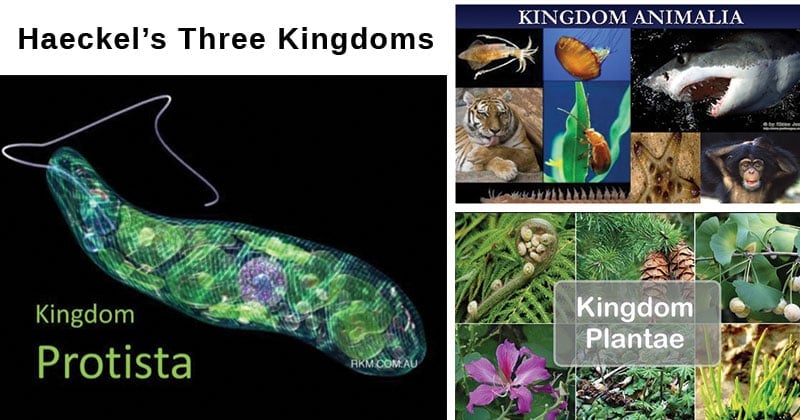- Classification is the arrangement of organisms into taxonomic groups known as taxa on the basis of similarities or relationships.
- Closely related organisms (i.e., organisms having similar characteristics) are placed into the same taxon.
- Organisms are categorized into larger groups based on their similarities and differences.
- The classification of living organisms is a complex and controversial subject because of which different taxonomic classification schemes existed at different times.
- In his classification scheme, Linnaeus recognized only two kingdoms of living things: Animalia and Plantae.
- At the time, microscopic organisms had not been studied in detail. Either they were placed in a separate category called Chaos or, in some cases, they were classified with plants or animals.
- As the knowledge of the properties of various groups of microbial life exploded, it became apparent that at this level of biological knowledge a division of the living world into two kingdoms cannot really be maintained on a logical and consistent ground.
- Then in the 1860s, the German investigator Ernst Haeckel proposed a three-kingdom system of classification.

Interesting Science Videos
Features of the Three-kingdom System of Classification
- Three kingdom classification system was put forward by Haeckel in order to overcome the objections and limitations of the Two Kingdom System of Classification.
- Haeckel suggested that the inconsistencies of the two-kingdom system could be avoided by the recognition of a third kingdom, and he proposed Protista as a new kingdom to accommodate organisms exhibiting characters either common to both plants and animals, or unique to their own.
- Haeckel’s three kingdoms were Animalia, Plantae, and Protista.
According to this system:
-
- The arrangement of kingdoms was done on the basis of morphological complexities and tissue system, the division of labor, and mode of nutrition.
- Unicellular animals, algae and fungi were separated from other organisms on the basis of lack of tissue differentiation.
- The new group was called the kingdom Protista.
- Organisms lacking morphological complexities, tissue system, the division of labor, and enjoying the diversified type of modes of nutrition were segregated and put under the kingdom Protista.
- Members of the kingdom Protista included the protozoa, fungi, bacteria, and other microorganisms.
- Later fungi and multicellular algae were taken out from the group.
- Organisms having diverse tissue-system with well- defined division of labour and maximum morphological complexities in their body remained segregated from protists and were bifurcated into two categories: those enjoying autotrophic mode of nutrition were considered to be plants and put under kingdom Plantae, and those that have entirely holophagic (phagotrophic) mode of nutrition were considered to be animals and put under kingdom Animalia.
- According to this system, all known microorganisms came to be recognised as protists; neither plants nor animals.
Objections and Limitations
- Haeckel’s system was not widely accepted, however, and microorganisms continued to be classified as plants (for example, bacteria and fungi) or animals (for example, protozoa).
- Nucleated and anucleated organisms were kept together in protists.
- Heterotrophic bacteria and fungi placed along with autotrophic algae.
References
- Engelkirk, P. G., Duben-Engelkirk, J. L., & Burton, G. R. W. (2011). Burton’s microbiology for the health sciences. Philadelphia: Wolters Kluwer Health/Lippincott Williams & Wilkins.
- Trivedi P.C., Pandey S, and Bhadauria S. (2010). Textbook of Microbiology. Pointer Publishers; First edition.
- Tortora, Gerard J., Funke, Berdell R.Case, Christine L.. (2013) Microbiology :an introduction Boston : Pearson,
- http://www.biologydiscussion.com/organism/the-kingdom-system-of-organisms-classification-top-6-concepts/54667
- https://www.cliffsnotes.com/study-guides/biology/biology/the-unity-and-diversity-of-life/kingdoms-of-living-things
- https://www.tutorialspoint.com/biological_classification/biological_classification_four_kingdom.asp
- https://www.embibe.com/study/three-kingdom-classification-ernest-haeckel-concept
